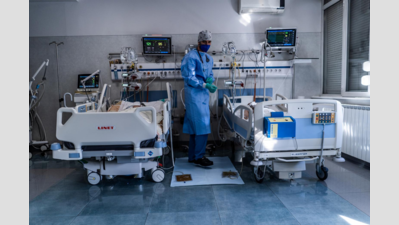ARTICLE AD BOX

Panaji: From fewer than 70 seats a few years ago, Goa Medical College (GMC) now offers 200 MBBS seats to aspiring medicos. Yet, as that number increases with time, young doctors increasingly balk at the idea of stopping their medical education with just one degree.Thus, even as specialists’ and superspecialists’ clinics can easily be found across the length and breadth of the state, family physicians are few and far between.For decades now in Goa, general practitioners have been the first point of contact for patients, providing comprehensive, non-surgical medical care, and making referrals to specialists when necessary. But that is now changing. “Patients too are aware.
Many choose to see a specialist themselves,” said Dr Sandesh Chodankar, an ENT surgeon at Healthway Hospital.It’s not unusual for patients to head to a multi-speciality hospital seeking relief from even common ailments like the common cold, cough, fever, or indigestion. While several factors have led to the shift, the driving force has been the expanded scope of specialty and super-specialty facilities.“GMC offers over a hundred MD and MS seats in various faculties.
Plus, several super specialities are taught here,” said a senior GMC doctor. “With DM and MCh courses also having been made available, MBBS doctors do not have to move outside the state for specialisation,” said another senior doctor.DM (doctor of medicine) and MCh (master of chirurgiae, the Latin term for surgery) are super-specialisations pursued after MD and MS respectively.With the medical field witnessing sweeping changes in interventions and medications, young men and women can’t be blamed for opting for specialisations, experts say.Orthopaedic surgeon Dr Aaron Soares told TOI that general practice has been on a decline since the concept of multi-speciality hospitals gained foothold. “Students of medicine don’t want to be general physicians today. Maybe in ten years, we will not see general practitioners at all,” said Soares.Those few who turn to general practice, he said, are either out of opportunities, or not ambitious enough to take up a speciality.
A senior GMC doctor said that recently, govt introduced a post-graduate course in general practice at GMC, offering training in advanced clinical skills.Currently, the General Physicians Association Goa has around 1,800 members, but only a few of these are into general practice.Indian Medical Association (IMA)-Goa president Dr Dattaram Desai, who has decades of experience in general practice, said that doctors today join a hospital rather than start a clinic as a general physician, because setting up and running a clinic is expensive.“To start a clinic, first, one needs to go through the rigmarole of several permissions. Not many have the appetite to do it,” he said.But this hasn’t always been the case. Desai said that as recently as three decades ago, starting a clinical practice was as easy as renting a room. “A table, chair, stethoscope, BP apparatus, and a doctor was good to see patients,” said Desai.He said that while a big city or town offers limited or no scope for a family physician, establishing a general practice in a small town or village is no cakewalk either.
“As it takes a lot of effort to start a practice, doctors are not inclined to start their practice in a small town,” said Desai.Soares, too, said that a general practitioner would have it tough in a city. “How will he survive in a city where he has to compete with hospitals?” he said.The trend, Soares said, is also that young doctors favour a stream of medicine that will allow them to avoid emergencies. “Between gynaecology and obstetrics, they opt for gynaecology, as an obstetrician is called at any hour,” he said. While gynaecology is focused on the female reproductive system and related conditions, obstetrics is focused on pregnancy, childbirth, and the postpartum period.Panaji-based consulting physician Dr Oscar Rebello said that Goa still has a better penetration of general physicians across its length and breadth, as compared to other states.



.png)
.png)
.png)
















 2 hours ago
5
2 hours ago
5









 English (US) ·
English (US) ·